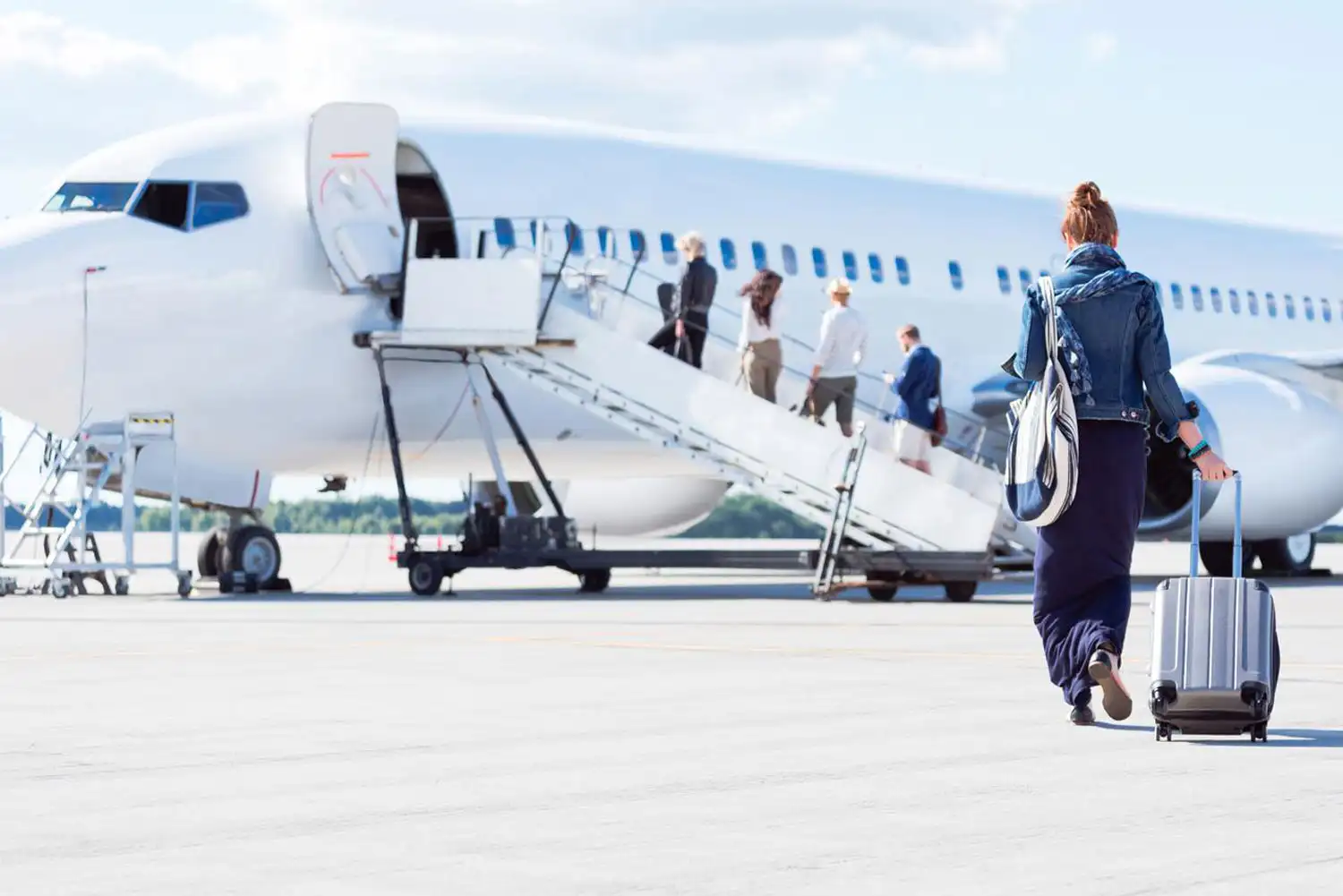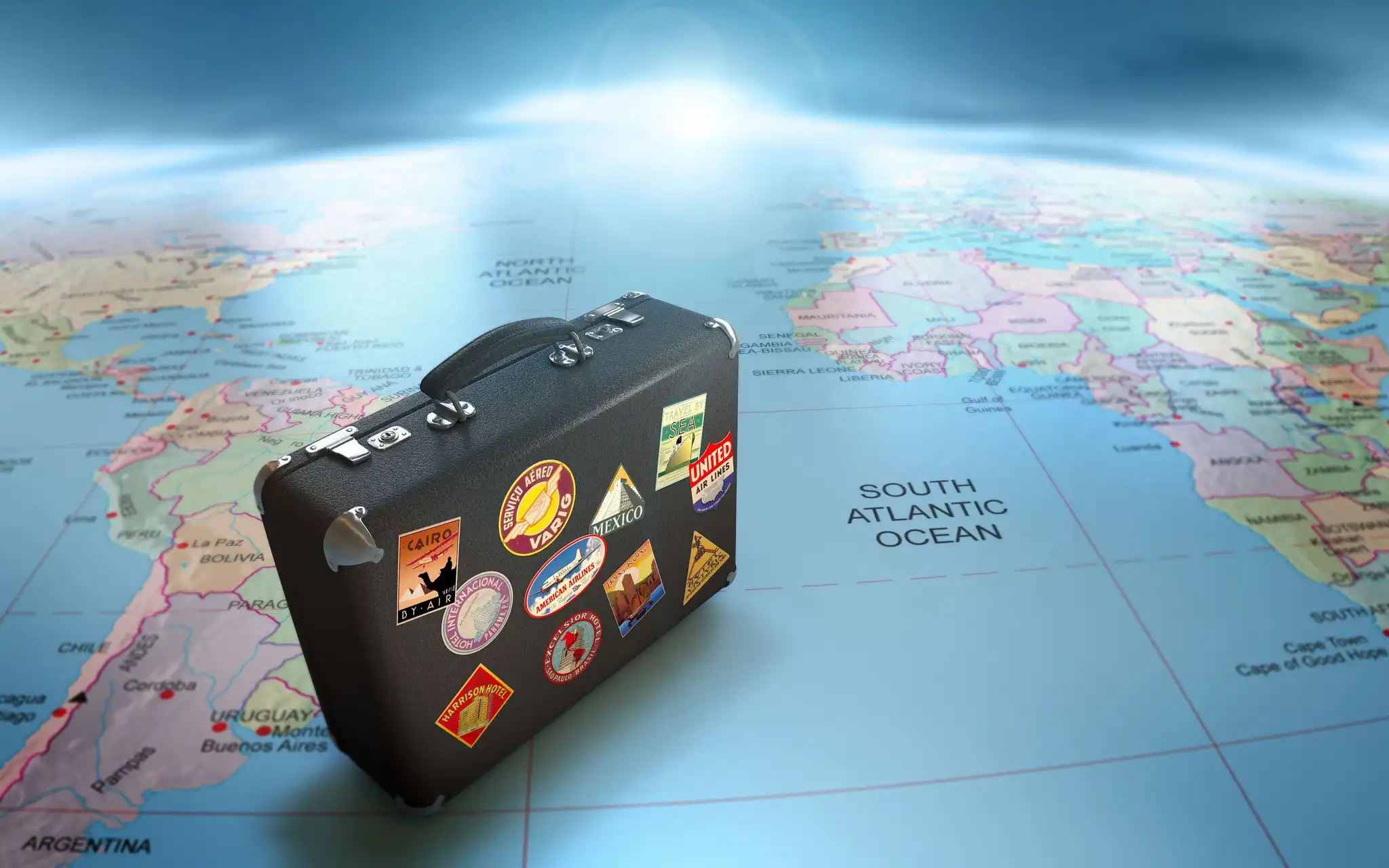Traveling with your dog on a plane may seem daunting at first, but with the right preparation and knowledge, you can ensure a comfortable and stress-free experience for both you and your furry companion. Flying with pets involves a lot of planning, and understanding the airline’s rules, health requirements, and other important factors is crucial to a smooth trip. Let’s dive deeper into what you need to know to travel successfully with your dog.
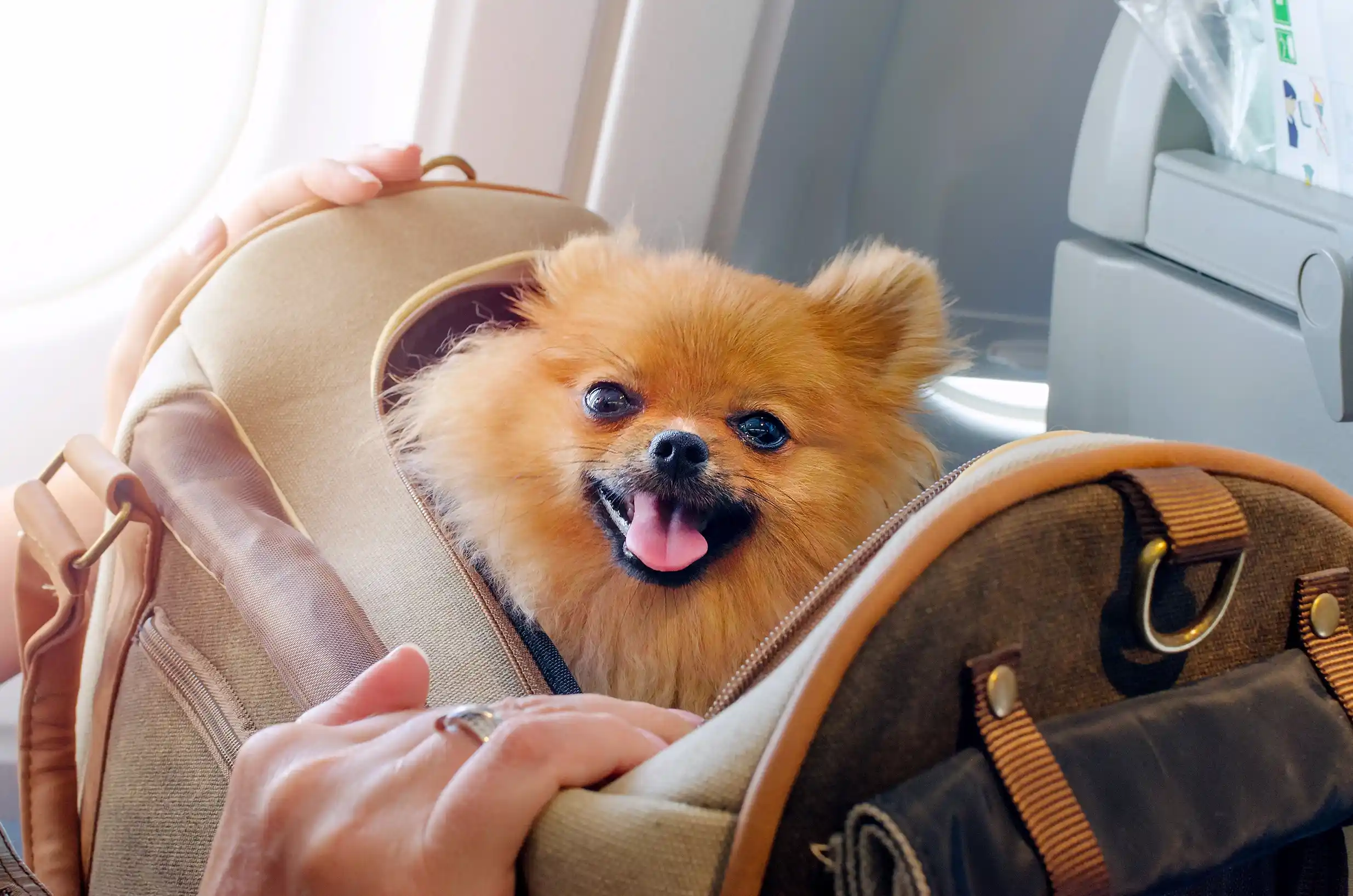
Your Dog’s Health Certificates
Before embarking on a flight with your dog, the first thing you need is a health certificate. This official document, issued by a licensed veterinarian, confirms that your dog is in good health and free from contagious diseases. This certificate is a mandatory requirement for most airlines and is usually required to be issued within 10 days of your departure date.
In addition to the general health certificate, many airlines require that your dog be up-to-date on their vaccinations. The rabies vaccine, in particular, is a common requirement for international travel, and you may also need proof of other vaccinations depending on your destination. It’s essential to check the pet importation rules of your destination country, as each country has its own vaccination and quarantine rules for pets.
If you’re traveling within the United States, airlines may have less strict health certificate requirements for domestic flights, but it’s still a good idea to bring one, especially if your dog has a history of medical conditions. For international travel, the requirements can vary significantly, and some countries may require a rabies titer test or other health examinations in addition to the health certificate. Always verify the pet importation guidelines for the country you are traveling to well ahead of your flight.
The Day of Your Flight
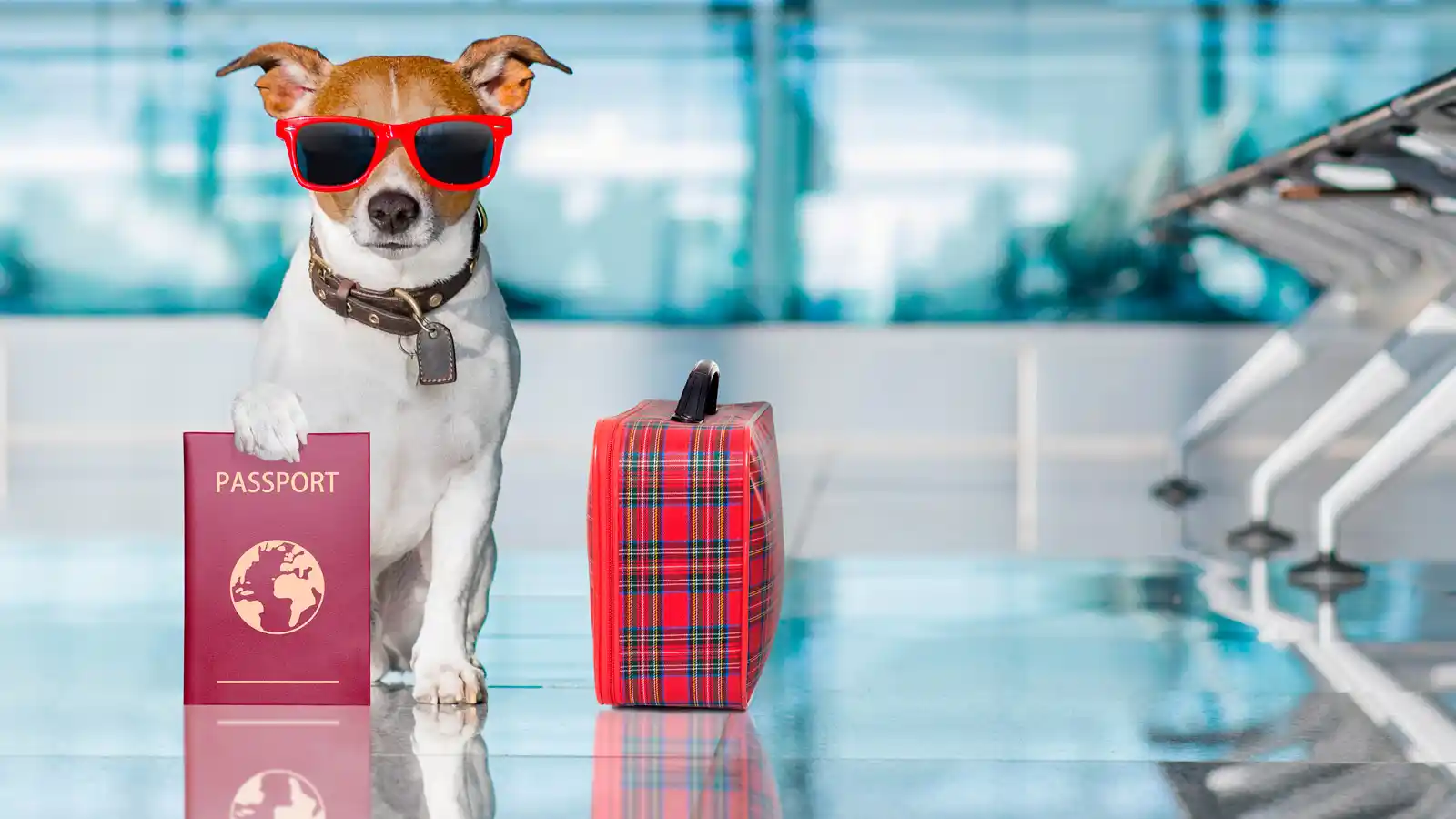
When it comes to flying with a dog, planning for the day of the flight is just as important as preparation beforehand. The airline recommends arriving at the airport early, as traveling with pets involves additional paperwork, checks, and procedures. Most airlines require pet owners to check in their pets at a designated counter before heading through security, especially if your dog is traveling as checked baggage or in the cargo hold. Be sure to leave yourself plenty of time for these steps, which might include providing paperwork, paying fees, and verifying your dog’s carrier is compliant with airline regulations.
It’s advisable to give your dog a light meal several hours before the flight. This helps prevent nausea or digestive upset during travel. Avoid feeding your dog right before the flight to minimize the chances of motion sickness. A short walk prior to heading to the airport is also highly recommended to burn off some of your dog’s energy and reduce anxiety. If possible, try to schedule your flight during times when your dog is typically calm, such as after their regular walk or nap.
Another important consideration is ensuring your dog is as comfortable as possible during the journey. If your dog is nervous about flying, you can help ease their anxiety by placing familiar items, like their favorite blanket or toy, inside the carrier. The presence of these items can have a calming effect. However, avoid overpacking the carrier, as it could make the space too cramped and uncomfortable.
Approved Pet Carriers
One of the most important aspects of flying with your dog is choosing the right carrier. Airlines have strict guidelines regarding pet carriers, and it is essential that you adhere to these rules. The carrier must be large enough for your dog to stand up, turn around, and lie down comfortably. The majority of airlines accept soft-sided carriers for pets traveling in the cabin, as long as they meet size restrictions (typically under the seat in front of you).
Hard-sided carriers may be necessary for pets traveling in the cargo hold, as they offer more protection. These carriers must be well-ventilated, secure, and durable enough to withstand the rigors of air travel. Be sure that the carrier is properly labeled with your contact information and includes your dog’s health certificate and other necessary documents in a secure pouch. For long flights, it’s a good idea to bring food and water for your pet, and some carriers even have built-in food and water bowls.
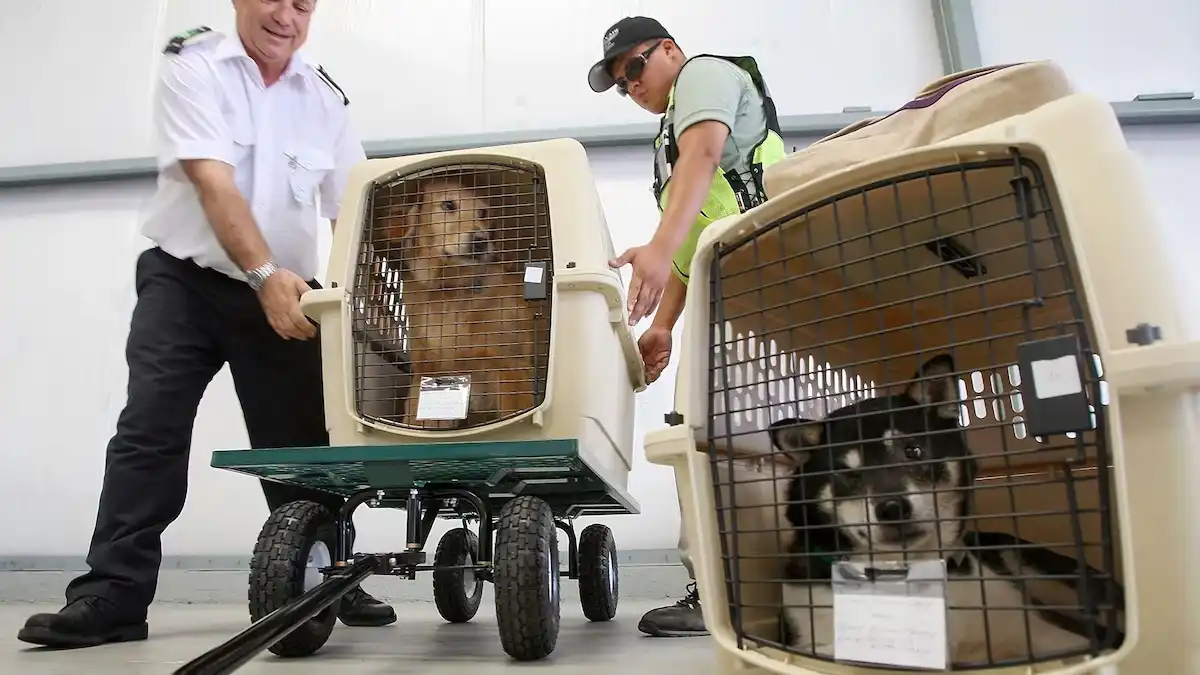
If you’re flying internationally, make sure the carrier meets international regulations, which can vary by country. For example, the carrier should be equipped with a live animal sticker, and it may need to meet additional standards for ventilation and strength. When flying in the cabin, the carrier must fit beneath the seat in front of you. Double-check the dimensions specified by the airline to avoid any last-minute surprises.
Tranquilizing Your Dog or Not?
A common question that pet owners ask is whether they should tranquilize their dog before a flight. While tranquilizers may seem like a good option for calming an anxious pet, they are generally not recommended for air travel. Tranquilizers can interfere with your dog’s ability to regulate their body temperature, which can be dangerous when flying at high altitudes. Additionally, tranquilizers may impair your dog’s balance and coordination, increasing the risk of injury during the flight.
Many veterinarians advise against tranquilizing pets for air travel unless absolutely necessary, as it can lead to health complications. Instead, consider using natural calming methods or products that are safer and more suitable for travel, such as calming collars, pheromone sprays, or anxiety wraps. You could also try providing your dog with some light exercise before the flight to help burn off excess energy. Consult your veterinarian about non-invasive ways to calm your dog before and during the flight. If your dog has a history of extreme anxiety, your vet may suggest some other alternatives, such as behavioral therapy.
If you do decide to sedate your dog, always check with your veterinarian first, as they will be able to recommend the correct dosage and type of sedative that is safe for your dog’s specific health condition.
Airline Pet Policies
Each airline has its own pet travel policies, so it’s crucial to check the specific guidelines for the airline you plan to travel with. These policies can differ greatly depending on whether your dog is flying in the cabin, in the cargo hold, or as checked baggage. For in-cabin flights, airlines generally allow small dogs (weighing 15 to 20 pounds) to travel with you, but they must remain in an approved carrier under the seat.
For dogs traveling in the cargo hold, each airline has specific requirements regarding carrier size, material, and even temperature conditions during the flight. Cargo holds are usually pressurized and temperature-controlled, but it’s still a good idea to choose a direct flight to minimize any stress on your dog. Additionally, airlines often impose fees for pet travel, which can range from $100 to $200 or more, depending on the destination and whether your dog is flying in the cabin or cargo hold.
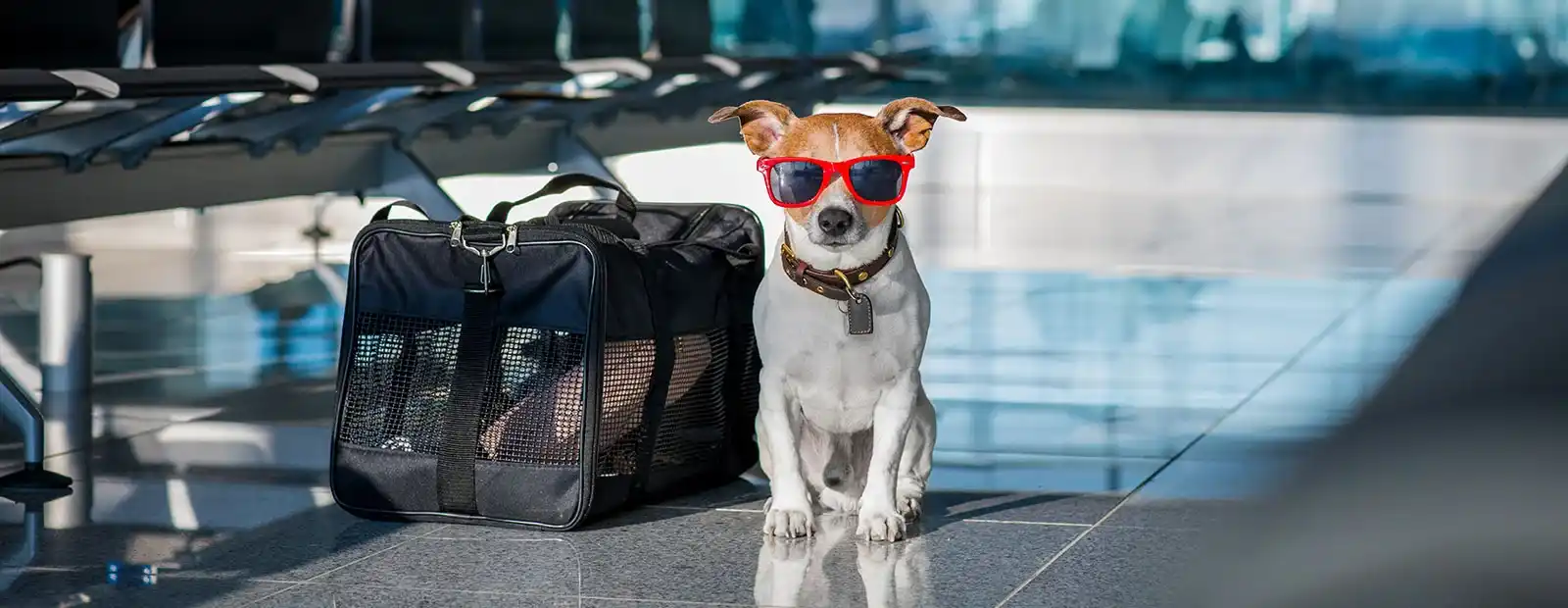
It’s also important to note that some airlines have restrictions on pet travel during peak seasons (summer and winter) due to temperature limitations. Always double-check the airline’s policies well in advance of booking to ensure you’re fully prepared. Furthermore, some airlines may require you to book a reservation for your dog, as there may be a limit to the number of pets allowed on each flight. Keep in mind that popular travel times may fill up these pet slots quickly, so early booking is essential.
Import, Export, and Transshipment of Pets
When traveling internationally with your dog, be prepared for the additional requirements of pet import and export. Each country has its own rules for bringing in pets, and these regulations can vary significantly. Many countries require a rabies vaccination certificate, while others might need a rabies titer test, which measures the level of antibodies in your dog’s blood. Some countries even have quarantine periods upon arrival, during which your dog will be held in a designated facility until they are cleared for entry.
Additionally, some countries have specific regulations for the transshipment of pets (i.e., if you are transferring flights in a third country). You must ensure that your dog can be safely transported through the transshipment country, and that any necessary documentation, such as health certificates, is in order. Failure to meet these import/export requirements can result in your dog being denied entry or facing quarantine.
It’s also worth mentioning that certain destinations, such as Australia, New Zealand, and the UK, have particularly stringent requirements, including quarantine periods, for pets entering the country. Make sure to do extensive research well in advance of your trip, as it can take several months to complete the required paperwork and vaccinations for some destinations.
Conclusion
Traveling with your dog on a plane is a rewarding experience, but it requires thorough preparation. Ensuring that your dog has the necessary health certificates, an approved carrier, and following the airline’s specific guidelines are essential steps in ensuring a safe and comfortable journey for both you and your pet. By avoiding tranquilizers, planning your flight day carefully, and understanding the import/export regulations, you can help minimize stress and ensure your dog arrives at your destination happy and healthy.
FAQs: Traveling with Dog on Plane
1. What health certificates do I need to travel with my dog?
Before flying with your dog, you’ll need a health certificate from a licensed veterinarian confirming that your pet is fit for travel. You will also need proof of vaccinations, including the rabies vaccination, and any other country-specific requirements for international travel.
2. Can I tranquilize my dog before flying?
It is not recommended to tranquilize your dog for air travel. Sedatives can interfere with your dog’s ability to regulate their body temperature and may lead to other health risks. Instead, use calming products or consult your vet for safe travel tips.
3. What are the best pet carriers for air travel?
Choose an airline-approved pet carrier that is spacious enough for your dog to stand, turn around, and lie down comfortably. Soft-sided carriers are generally allowed for in-cabin travel, while hard-sided carriers are often necessary for pets flying in the cargo hold.
4. How do I prepare my dog for the flight day?
Give your dog a light meal several hours before the flight, avoid feeding right before, and ensure they get plenty of exercise to burn off energy. Arrive early at the airport and bring familiar items like toys or blankets to help your pet feel comfortable during the journey.
5. What are the airline pet policies?
Each airline has specific pet travel policies, including carrier requirements, pet size restrictions, and fees. Make sure to check your airline’s guidelines and book in advance to ensure your pet can travel with you.
6. Can my dog travel in the cargo hold?
Yes, many airlines allow dogs to travel in the cargo hold, but they must be in an airline-approved carrier. The cargo hold is typically temperature-controlled, but it’s still best to avoid flying during extreme weather conditions.
7. What are the import and export requirements for pets?
Countries have different rules for importing and exporting pets. You may need additional health certifications, vaccinations, or a rabies titer test for certain destinations. Check with the destination country’s pet import regulations well in advance of your flight.









